


xxxxxThe American writer Herman Melville went to sea as a young man and took part in a number of voyages to the South Seas, some of them in whaling expeditions. When he began writing in 1844 he based his novels on this experience, and gained widespread recognition for his sea stories such as Typee, A Peep at Polynesian Life in 1846, Omoo in 1847, and Redburn, His first Voyage, and White-Jacket in 1850. In that year, however, he struck up a friendship with his fellow writer Nathaniel Hawthorne, and his use of symbolism influenced Melville’s next work, the famous Moby Dick of 1851. This was a gripping yarn about Captain Ahab, master of a whaler, who, having been savaged by a great white whale, becomes frenetically obsessed with reaping revenge. At a deeper level, however, the story represented the destructive power not only of nature, but also of human qualities - such as courage and determination - when taken to extreme limits. When the encounter takes place, the ship is sunk and Ahab is killed, together with all his crew save one - the story teller. Melville also wrote a number of short stories - notably his Piazza Tales - and some poetry, but his later works, including Moby Dick, were not well received, and some, like his obscure Pierre, were almost totally rejected. It was not, in fact, until the next century that his qualities came to be recognised. His last piece of prose, the novel Billy Budd, Foretopman, was later adapted as a play and film, and in 1951 the English composer Benjamin Britten made it into an opera.
HERMAN MELVILLE 1819 - 1891
(G3c, G4, W4, Va, Vb, Vc)
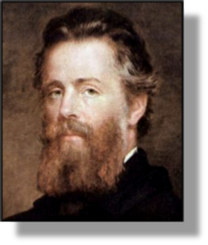 xxxxxThe novel Moby-Dick, one of the most exciting sea stories of all time, was the work of the American writer Herman Melville. Published in 1851 and based on his whaling experiences in the South Seas, it tells the tale of Captain Ahab, master of the whaler Pequod, who, having had one of his legs torn off at the knee by the great white whale, “Moby-Dick”, becomes frenetically obsessed with revenge. The result is not only a gripping, often terrifying account of his frantic search for his deadly enemy, but also a frightening, symbolic insight into the destructive power not only of nature, but of human qualities when pursued to the ultimate.
xxxxxThe novel Moby-Dick, one of the most exciting sea stories of all time, was the work of the American writer Herman Melville. Published in 1851 and based on his whaling experiences in the South Seas, it tells the tale of Captain Ahab, master of the whaler Pequod, who, having had one of his legs torn off at the knee by the great white whale, “Moby-Dick”, becomes frenetically obsessed with revenge. The result is not only a gripping, often terrifying account of his frantic search for his deadly enemy, but also a frightening, symbolic insight into the destructive power not only of nature, but of human qualities when pursued to the ultimate.
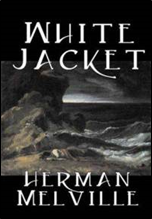 xxxxxMelville was born into quite a comfortable family in Albany, New York, but it fell on hard times following the death of his father in 1832. He went to sea as a cabin boy in 1837, sailing to Liverpool, England, and two years later joined the crew of the whaler Acushnet, working in the Pacific. Eighteen months later he jumped ship when it arrived at the Marquesas Islands and, according to some accounts, was captured by cannibals. He managed to escape in the Lucy Ann, an Australian whaler, and ended up in Honolulu. There in 1843 he enlisted as a deckhand on an American naval frigate, and was discharged from service on arriving in the United States in October the following year. It was from this time onwards that he turned to writing, joining the literary circles in Boston and New York City.
xxxxxMelville was born into quite a comfortable family in Albany, New York, but it fell on hard times following the death of his father in 1832. He went to sea as a cabin boy in 1837, sailing to Liverpool, England, and two years later joined the crew of the whaler Acushnet, working in the Pacific. Eighteen months later he jumped ship when it arrived at the Marquesas Islands and, according to some accounts, was captured by cannibals. He managed to escape in the Lucy Ann, an Australian whaler, and ended up in Honolulu. There in 1843 he enlisted as a deckhand on an American naval frigate, and was discharged from service on arriving in the United States in October the following year. It was from this time onwards that he turned to writing, joining the literary circles in Boston and New York City.
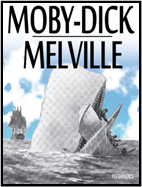 xxxxxHis experience at sea, gained over a period of some five years, gave him ample material for a string of five novels. Typee, A Peep at Polynesian Life of 1846, Omoo, a year later, and Mardi, produced in 1849, were romances centred around the South Sea islands. Then followed Redburn, His First Voyage, based on his own first trip as a cabin boy, and White-Jacket in 1850, telling of his experiences in the U.S. navy and including accusations of abuse. Four were received with enthusiasm, but Mardi, a confused, extravagant fantasy, found no favour with the critics or the public. In 1850 Melville moved to a farm near Pittsfield, Massachusetts. There he struck up a close but brief friendship with Nathaniel Hawthorne, a writer whose use of symbolism had a marked influence up
xxxxxHis experience at sea, gained over a period of some five years, gave him ample material for a string of five novels. Typee, A Peep at Polynesian Life of 1846, Omoo, a year later, and Mardi, produced in 1849, were romances centred around the South Sea islands. Then followed Redburn, His First Voyage, based on his own first trip as a cabin boy, and White-Jacket in 1850, telling of his experiences in the U.S. navy and including accusations of abuse. Four were received with enthusiasm, but Mardi, a confused, extravagant fantasy, found no favour with the critics or the public. In 1850 Melville moved to a farm near Pittsfield, Massachusetts. There he struck up a close but brief friendship with Nathaniel Hawthorne, a writer whose use of symbolism had a marked influence up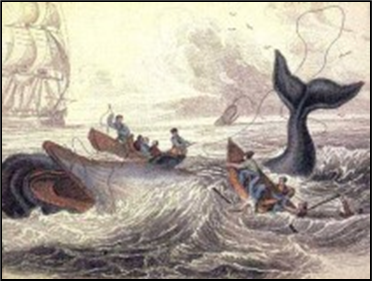 on Melville’s next and finest work, Moby Dick (or The White Whale). In this battle of wills, the tragic hero, Captain Ahab, becomes a symbol of qualities - such as courage, determination and pride - which, taken to extreme, lead inevitably to self-destruction. In the end, the forces of nature, symbolised by Moby Dick, destroy Ahab and all his crew save one. Ishmael is left to tell the tale and preach the moral.
on Melville’s next and finest work, Moby Dick (or The White Whale). In this battle of wills, the tragic hero, Captain Ahab, becomes a symbol of qualities - such as courage, determination and pride - which, taken to extreme, lead inevitably to self-destruction. In the end, the forces of nature, symbolised by Moby Dick, destroy Ahab and all his crew save one. Ishmael is left to tell the tale and preach the moral.
xxxxxBut Moby-Dick was not the success he had hoped for. The tale was powerfully told, but it was interspersed with passages unrelated to the story, such as technical details on whales and whaling. This took the heat out of the drama, and lost the novel the acclaim it deserved. The bitterness felt at this rejection is to be seen in his next work, Pierre, an obscure, complex account which dealt with the nature of evil, and offended by its detailed study of incest. Published in 1852, this was a decided failure, and it is doubtless for that reason that he turned to the writing of sketches and short stories. In 1856 he published a collection entitled The Piazza Tales - among the best being Benito Cereno and Bartleby the Scrivener - , and a year later the novel The Confidence-Man, a satire set on board a Mississippi steamboat. But the income from these was not sufficient to maintain a family of four children. Having been rejected for naval service in the American Civil War, he returned to New York in 1863 and three years later began work as a customs inspector, a job he held for almost twenty years. During that time he produced several volumes of verse, including Battle-Pieces and Aspects of the War in 1866, and, ten years later, the long philosophical poem Clarel, based on a pilgrimage to the Holy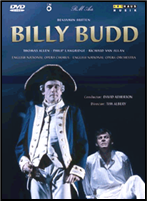 Land.
Land.
xxxxxHis last prose piece of importance was Billy Budd, Foretopman. This was not completed until a few months before his death, and was not published, in fact, until 1924. In this short symbolic novel a young sailor personifies innocence, and a tyrannical master-at-arms represents evil. It was later adapted as a play and film, and in 1951 the English composer Benjamin Britten, working with the novelist E.M. Forster, produced an opera based on the theme.
xxxxxMelville died in obscurity, convinced he had failed as a writer. Today, however, following a revival of interest in his work, Moby Dick is considered a masterpiece of American literature, and Melville himself has come to be regarded as a major figure amongst his country’s romantic writers prior to the Civil War.
xxxxxIncidentally, apart from his sailing days in the South Seas, Melville visited London in 1849 in connection with the publication of Moby Dick, and made a second visit to Liverpool in 1856, where Nathaniel Hawthorne was serving as U.S consul. And it was in that year that he embarked on a tour of Europe and the Levant. His last sea voyage was in 1860, when he travelled around Cape Horn in the clipper Meteor, captained by his brother Thomas. ……
xxxxx…… One of Melville’s grandfathers, Major Thomas Melville, took part in the Boston Tea Party of 1773, and his other one, General Peter Gansevoort, was a friend of the American author Fenimore Cooper, and fought against the British during the defence of Fort Stanwix in 1777.
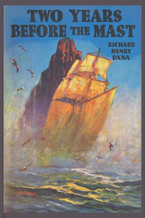
xxxxxInxhis novel White-Jacket, Melville played tribute to his fellow countryman and writer Richard Henry Dana Jnr (1815-1882), known today for his best-seller Two Years Before the Mast. He described Dana’s account of rounding Cape Horn as “unmatchable” for its portrayal of the violent sea and the beauty of the landscape. Born in Cambridge, Massachusetts, of an influential Boston family, Dana trained as a lawyer but, in 1834 decided to enlist as a merchant seaman to see what life was really like “before the mast” - that is, the quarters in the ship’s bow reserved for the common seaman.
xxxxxServing as a deckhand, he departed from Boston in the August, bound for California (then a province of Mexico) by way of Cape Horn, and returned in September 1836. Throughout his journey he kept a diary of daily events, testifying to how poorly the common sailor was treated, and his account, published in 1840, proved to be one of the most candid accounts of life at sea in the age of sail. Despite its popularity, that was his only claim to literary fame. On returning to Boston he devoted his life to the law, and became one of the country’s most respected marine lawyers.
Va-1837-1861-Va-1837-1861-Va-1837-1861-Va-1837-1861-Va-1837-1861-Va-1837-1861-Va
Acknowledgements
Melville: by the American painter Joseph Oriel Eaton (1829-1875), 1870 – Library of Congress, Washington. Moby Dick: from an illustrated version of Moby Dick, artist unknown. Hawthorne: detail, by the American artist Charles Osgood (1809-1890), 1840 – Peabody Essex Museum, Salem, Massachusetts, USA. Emerson: by the American engraver Stephen Alonzo Schoff (1818-1904), 1878, after an original drawing by the American artist Samuel Worcester Rowse (1822-1901). Thoreau: daguerreotype by the American photographer Benjamin D. Maxham (1821-1889), 1856 – National Portrait Gallery, Washington.
xxxxxThe American Nathaniel Hawthorne (1804-1864), the writer who influenced the works of Herman Melville, made intense use of allegory and symbolism in his novels and short stories. In much of his writings he dealt in depth with sin, guilt and pride, and the complex moral and psychological issues these themes raised. His penetrating interest in human behaviour, and his brilliant plot construction, can best be seen in his masterpiece The Scarlet Letter of 1850, a story about the plight of a “fallen woman” in the puritanical Boston of the 17th century. His also wrote the novels The House with the Seven Gables, The Blithedale Romance and the highly symbolic The Marble Faun, and, apart from stories for children, he produced a large number of short stories in collections such as Twice-Told Tales and Mosses from an Old Manse. He served as American consul in England in the mid 1850s, and then travelled on the continent. His writings influenced, among others, the American writer Henry James.
Including:
Nathaniel Hawthorne and
Ralph Waldo Emerson

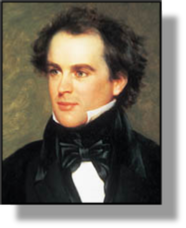 xxxxxThe American Nathaniel Hawthorne (1804-1864), a writer who, as we have seen, had an influence upon the works of Herman Melville, was the author of one of America’s first great novels, The Scarlet Letter. Published in 1850, a year before Moby Dick, it took as its story line the plight of a “fallen woman” and her illegitimate daughter, living in the puritanical society of Boston during the mid 17th century. Brilliantly written, and with telling use of symbolism, this was but one of his many works which dealt in depth with sin, guilt and pride, and the psychological as well as the moral issues these themes brought in their wake.
xxxxxThe American Nathaniel Hawthorne (1804-1864), a writer who, as we have seen, had an influence upon the works of Herman Melville, was the author of one of America’s first great novels, The Scarlet Letter. Published in 1850, a year before Moby Dick, it took as its story line the plight of a “fallen woman” and her illegitimate daughter, living in the puritanical society of Boston during the mid 17th century. Brilliantly written, and with telling use of symbolism, this was but one of his many works which dealt in depth with sin, guilt and pride, and the psychological as well as the moral issues these themes brought in their wake.
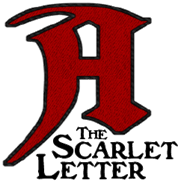 xxxxxHe was born in Salem, Massachusetts, and, after studying at Bowdoin College, attempted to make a living as a writer, contributing stories and articles to newspapers and periodicals. His work aroused only moderate interest, however, and in 1839 he was obliged to find work as a Boston customs official. In 1842 he married and, settling in the Old Manse in Concord, Massachusetts, picked up his pen again. In the space of three years, beginning in 1849, he produced three novels, including The Scarlet Letter, and a volume of short stories. These works brought him wide recognition, but in 1853 his career took a different direction. Due to his long-term friendship with Franklin Pierce, whom he had known as a class-mate in his college days, he was appointed the U.S. consul to Liverpool, England, when Pierce was elected President. He held this post for four years, and then spent the next three years on the continent, mostly in Italy.
xxxxxHe was born in Salem, Massachusetts, and, after studying at Bowdoin College, attempted to make a living as a writer, contributing stories and articles to newspapers and periodicals. His work aroused only moderate interest, however, and in 1839 he was obliged to find work as a Boston customs official. In 1842 he married and, settling in the Old Manse in Concord, Massachusetts, picked up his pen again. In the space of three years, beginning in 1849, he produced three novels, including The Scarlet Letter, and a volume of short stories. These works brought him wide recognition, but in 1853 his career took a different direction. Due to his long-term friendship with Franklin Pierce, whom he had known as a class-mate in his college days, he was appointed the U.S. consul to Liverpool, England, when Pierce was elected President. He held this post for four years, and then spent the next three years on the continent, mostly in Italy.
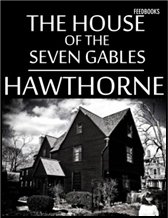 xxxxxDuring his time at Concord, Hawthorne wrote a number of short stories that were published in 1846 under the title Mosses from an Old Manse. This volume included Roger Malvin’s Burial and Young Goodman Brown, and was followed in 1852 by another collection, The Snow-Image, and Other Twice-Told Tales. By then he had completed his three major novels, The Scarlet Letter, The House of The Seven Gables, and The Blithedale Romance. These works, making full use of allegory and symbolism, provided a penetrating study of human behaviour, particularly in the matter of sin and the mixed feelings of guilt this engenders. Such psychological analysis, together with his masterly construction of the plot - a vital ingredient -, is seen at its bes
xxxxxDuring his time at Concord, Hawthorne wrote a number of short stories that were published in 1846 under the title Mosses from an Old Manse. This volume included Roger Malvin’s Burial and Young Goodman Brown, and was followed in 1852 by another collection, The Snow-Image, and Other Twice-Told Tales. By then he had completed his three major novels, The Scarlet Letter, The House of The Seven Gables, and The Blithedale Romance. These works, making full use of allegory and symbolism, provided a penetrating study of human behaviour, particularly in the matter of sin and the mixed feelings of guilt this engenders. Such psychological analysis, together with his masterly construction of the plot - a vital ingredient -, is seen at its bes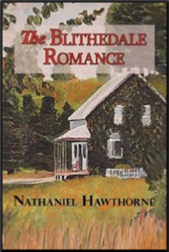 t in his masterpiece The Scarlet Letter. This tells the story of Hester Prynne who, having committed adultery with a Church minister, is forced to wear the badge of shame, a scarlet letter “A” standing for adulteress. Despite condemnation by society, however, she refuses to reveal the identity of her lover, and defends her illicit affair as one of true, natural love. This show of loyalty and sincerity is in marked contrast to the actions of her husband, who, though holding the high moral ground, degrades himself by his relentless search for her lover and, having found him, his ruthless persecution of the guilt-stricken young man. The novel, ending in the redeeming power of love, won fame for its author and a place among the classics of American literature.
t in his masterpiece The Scarlet Letter. This tells the story of Hester Prynne who, having committed adultery with a Church minister, is forced to wear the badge of shame, a scarlet letter “A” standing for adulteress. Despite condemnation by society, however, she refuses to reveal the identity of her lover, and defends her illicit affair as one of true, natural love. This show of loyalty and sincerity is in marked contrast to the actions of her husband, who, though holding the high moral ground, degrades himself by his relentless search for her lover and, having found him, his ruthless persecution of the guilt-stricken young man. The novel, ending in the redeeming power of love, won fame for its author and a place among the classics of American literature.
xxxxxAmong his other works were the products of his early years, such at his Twice-Told Tales of 1837, a collection including such stories as The Great Carbuncle and Sights from a Steeple, and his novel of later years, the highly symbolic The Marble Faun, written in England in 1860. During his career he also wrote a series of works for children, such as Grandfather’s Chair, Famous Old People, A Wonder Book for Girls and Boys, and Tanglewood Tales, a retelling of some classical legends. His psychological and symbolical works influenced Melville - with whom he was friendly during their days at Pittsfield in the 1850s - and, among others, the future American writer Henry James.
xxxxxIncidentally, one of Hawthorne’s early ancestors, William Hathorne (as it was then spelled) was a magistrate who sentenced a Quaker woman to a public whipping. His son, John, was one of the three judges at the Salem witchcraft trials of 1692 (W3). Hawthorne’s novel The House of the Seven Gables was based on the legend of a curse placed on the Hawthorne family by a victim of the famous witchcraft trials. ……
 xxxxx…… Hawthorne’s health broke down rapidly in the last few years of his life, and this is doubtless why he left so many unfinished works. In the early 1860s he also suffered a mental breakdown and, so we are told, began without reason to write the number 64 on numerous scraps of paper. It proved to be the year in which he died.
xxxxx…… Hawthorne’s health broke down rapidly in the last few years of his life, and this is doubtless why he left so many unfinished works. In the early 1860s he also suffered a mental breakdown and, so we are told, began without reason to write the number 64 on numerous scraps of paper. It proved to be the year in which he died.
xxxxxThe American essayist and poet Ralph Waldo Emerson (1803-1882), who made the acquaintance of Nathaniel Hawthorne in the early 1840s, was trained as a Unitarian minister, but in 1832 he left the Church and made a tour of Europe. While in England he met the poets Coleridge and Wordsworth, and became a close friend of the historian Thomas Carlyle. In 1836 he produced his Nature. This work contained his philosophy Transcendentalism, the idea that man had the ability to “transcend” the material world and, by self reliance, arrive at an inner understanding of a universal moral law. Amongst those who supported him was the writer Henry Thoreau, but little notice was taken of this philosophy until, a few years later, he attacked formal religion in his lectures The American Scholar and his Address at Divinity College. He gained some adherents, but his suggestion that evil did not exist was rejected by many, including Hawthorne and Herman Melville. Emerson, a strong opponent of slavery, also wrote three selections of essays, all well received, a volume of poems in 1846, and a travel book entitled English Traits in 1856.
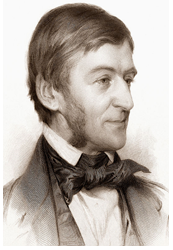 xxxxxThe American essayist and poet Ralph Waldo Emerson (1803-1882) made the acquaintance of Nathaniel Hawthorne in the early 1840s while living in Concord. He was born in Boston, son of a Unitarian minister, and after studying at Harvard, became a minister himself in 1826, delivering occasional sermons in an around Boston. In 1832, however, in a crisis of faith, he left the Church and embarked on a tour of Europe. In England, he met, amongst others, the poets Samuel Coleridge Taylor and William Wordsworth, and the historian Thomas Carlyle, with whom he began a life-long friendship.
xxxxxThe American essayist and poet Ralph Waldo Emerson (1803-1882) made the acquaintance of Nathaniel Hawthorne in the early 1840s while living in Concord. He was born in Boston, son of a Unitarian minister, and after studying at Harvard, became a minister himself in 1826, delivering occasional sermons in an around Boston. In 1832, however, in a crisis of faith, he left the Church and embarked on a tour of Europe. In England, he met, amongst others, the poets Samuel Coleridge Taylor and William Wordsworth, and the historian Thomas Carlyle, with whom he began a life-long friendship.
xxxxxHexreturned to live at Concord, Massachusetts, in 1833 and it was there, three years later, that he produced his Nature, a work which contained the essence of his philosophy Transcendentalism, a train of thought in which he argued that man had the ability to “transcend” the material world and, by self-reliance, arrive at an inner understanding of a universal moral law. To achieve this, man must have the freedom required to look into his own heart and receive the necessary spiritual guidance. In this he was supported by the writer Henry Thoreau and others, but little notice was taken of his views at that time.
xxxxxIn 1838, however, following his lecture The American Scholar, and his Address at Divinity College, in which he attacked formal religion as a corollary to his idea of spiritual self-sufficiency, he became a well-known and controversial figure. He expanded his ideas in the short-lived journal The Dial, which he helped to found in 1840, but his suggestion that evil did not exist proved a step too far, and was rejected by many, including both Hawthorne and Herman Melville.

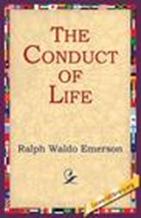
xxxxxHis two series of Essays of 1841 and 1844, including such gems as Compensation, Spiritual Laws, The Poet, and Character, were highly successful, as was his later edition of 1860 entitled The Conduct of Life. His volume of poems appeared in 1846, and after a second visit to Europe, beginning in 1847, he wrote the travel book English Traits in 1856, and lent his support to the anti-slavery movement. By then he had been dubbed “the Sage of Concord”.
xxxxxIncidentally, a number of Emerson’s sayings have become part of the English language, such as “Hitch your wagon to a star”, “Obey thy heart”, and “All mankind loves a lover”. And in his Concord Hymn, commemorating the victory of the colonists during the American War of Independence, it was Emerson who wrote of “the shot that was heard round the world”.
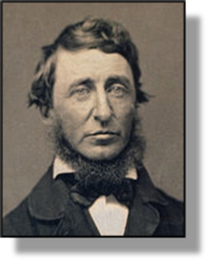 xxxxxAsxwe have seen, the writer and poet of nature Henry David Thoreau (1817-1862) was a close friend of Ralph Waldo Emerson and supported his philosophy of Transcendentalism. Today he is best remembered for his Walden (Life in the Woods) of 1854, a back-to-nature work in which he described his attempt to live a simple life - unfettered by materialism -, and for his Civil Disobedience of 1849, an influential essay which, by its advocacy of passive resistance, influenced such future reformers as India’s Mahatma
xxxxxAsxwe have seen, the writer and poet of nature Henry David Thoreau (1817-1862) was a close friend of Ralph Waldo Emerson and supported his philosophy of Transcendentalism. Today he is best remembered for his Walden (Life in the Woods) of 1854, a back-to-nature work in which he described his attempt to live a simple life - unfettered by materialism -, and for his Civil Disobedience of 1849, an influential essay which, by its advocacy of passive resistance, influenced such future reformers as India’s Mahatma 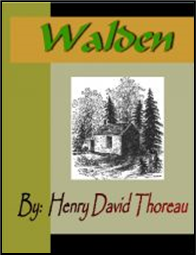 Gandhi and America’s Martin Luther King. During his two-year stay in a small, log cabin near Walden Pond - on land owned by Emerson - he took a close interest in nature, and later gained a reputation for his study of flora and fauna in the area around Concord.
Gandhi and America’s Martin Luther King. During his two-year stay in a small, log cabin near Walden Pond - on land owned by Emerson - he took a close interest in nature, and later gained a reputation for his study of flora and fauna in the area around Concord.
xxxxxIncidentally, in his lectures and writings Thoreau protested strongly against slavery, and he publicly defended the Kansas farmer John Brown (of John Brown’s Body) when, in an attempt to set up a mountain refuge for runaway slaves, he made his unsuccessful attack on Harpers Ferry in 1859. ……
xxxxx…… Thoreau’s love of a simple life of self-sufficiency is admirably summed up in a single sentence in his Walden: “I would rather sit on a pumpkin and have it all to myself than be crowded on a velvet cushion.”






 xxxxxThe novel Moby-
xxxxxThe novel Moby- xxxxxMelville was born into quite a comfortable family in Albany, New York, but it fell on hard times following the death of his father in 1832. He went to sea as a cabin boy in 1837, sailing to Liverpool, England, and two years later joined the crew of the whaler Acushnet, working in the Pacific. Eighteen months later he jumped ship when it arrived at the Marquesas Islands and, according to some accounts, was captured by cannibals. He managed to escape in the Lucy Ann, an Australian whaler, and ended up in Honolulu. There in 1843 he enlisted as a deckhand on an American naval frigate, and was discharged from service on arriving in the United States in October the following year. It was from this time onwards that he turned to writing, joining the literary circles in Boston and New York City.
xxxxxMelville was born into quite a comfortable family in Albany, New York, but it fell on hard times following the death of his father in 1832. He went to sea as a cabin boy in 1837, sailing to Liverpool, England, and two years later joined the crew of the whaler Acushnet, working in the Pacific. Eighteen months later he jumped ship when it arrived at the Marquesas Islands and, according to some accounts, was captured by cannibals. He managed to escape in the Lucy Ann, an Australian whaler, and ended up in Honolulu. There in 1843 he enlisted as a deckhand on an American naval frigate, and was discharged from service on arriving in the United States in October the following year. It was from this time onwards that he turned to writing, joining the literary circles in Boston and New York City.  xxxxxHis experience at sea, gained over a period of some five years, gave him ample material for a string of five novels. Typee, A Peep at Polynesian Life of 1846, Omoo, a year later, and Mardi, produced in 1849, were romances centred around the South Sea islands. Then followed Redburn, His First Voyage, based on his own first trip as a cabin boy, and White-
xxxxxHis experience at sea, gained over a period of some five years, gave him ample material for a string of five novels. Typee, A Peep at Polynesian Life of 1846, Omoo, a year later, and Mardi, produced in 1849, were romances centred around the South Sea islands. Then followed Redburn, His First Voyage, based on his own first trip as a cabin boy, and White- on Melville’s next and finest work, Moby Dick (or The White Whale). In this battle of wills, the tragic hero, Captain Ahab, becomes a symbol of qualities -
on Melville’s next and finest work, Moby Dick (or The White Whale). In this battle of wills, the tragic hero, Captain Ahab, becomes a symbol of qualities - Land.
Land.

 xxxxxThe American Nathaniel Hawthorne (1804-
xxxxxThe American Nathaniel Hawthorne (1804- xxxxxHe was born in Salem, Massachusetts, and, after studying at Bowdoin College, attempted to make a living as a writer, contributing stories and articles to newspapers and periodicals. His work aroused only moderate interest, however, and in 1839 he was obliged to find work as a Boston customs official. In 1842 he married and, settling in the Old Manse in Concord, Massachusetts, picked up his pen again. In the space of three years, beginning in 1849, he produced three novels, including The Scarlet Letter, and a volume of short stories. These works brought him wide recognition, but in 1853 his career took a different direction. Due to his long-
xxxxxHe was born in Salem, Massachusetts, and, after studying at Bowdoin College, attempted to make a living as a writer, contributing stories and articles to newspapers and periodicals. His work aroused only moderate interest, however, and in 1839 he was obliged to find work as a Boston customs official. In 1842 he married and, settling in the Old Manse in Concord, Massachusetts, picked up his pen again. In the space of three years, beginning in 1849, he produced three novels, including The Scarlet Letter, and a volume of short stories. These works brought him wide recognition, but in 1853 his career took a different direction. Due to his long- xxxxxDuring his time at Concord, Hawthorne wrote a number of short stories that were published in 1846 under the title Mosses from an Old Manse. This volume included Roger Malvin’s Burial and Young Goodman Brown, and was followed in 1852 by another collection, The Snow-
xxxxxDuring his time at Concord, Hawthorne wrote a number of short stories that were published in 1846 under the title Mosses from an Old Manse. This volume included Roger Malvin’s Burial and Young Goodman Brown, and was followed in 1852 by another collection, The Snow- t in his masterpiece The Scarlet Letter. This tells the story of Hester Prynne who, having committed adultery with a Church minister, is forced to wear the badge of shame, a scarlet letter “A” standing for adulteress. Despite condemnation by society, however, she refuses to reveal the identity of her lover, and defends her illicit affair as one of true, natural love. This show of loyalty and sincerity is in marked contrast to the actions of her husband, who, though holding the high moral ground, degrades himself by his relentless search for her lover and, having found him, his ruthless persecution of the guilt-
t in his masterpiece The Scarlet Letter. This tells the story of Hester Prynne who, having committed adultery with a Church minister, is forced to wear the badge of shame, a scarlet letter “A” standing for adulteress. Despite condemnation by society, however, she refuses to reveal the identity of her lover, and defends her illicit affair as one of true, natural love. This show of loyalty and sincerity is in marked contrast to the actions of her husband, who, though holding the high moral ground, degrades himself by his relentless search for her lover and, having found him, his ruthless persecution of the guilt- xxxxx…… Hawthorne’s health broke down rapidly in the last few years of his life, and this is doubtless why he left so many unfinished works. In the early 1860s he also suffered a mental breakdown and, so we are told, began without reason to write the number 64 on numerous scraps of paper. It proved to be the year in which he died.
xxxxx…… Hawthorne’s health broke down rapidly in the last few years of his life, and this is doubtless why he left so many unfinished works. In the early 1860s he also suffered a mental breakdown and, so we are told, began without reason to write the number 64 on numerous scraps of paper. It proved to be the year in which he died. xxxxxThe American essayist and poet Ralph Waldo Emerson (1803-
xxxxxThe American essayist and poet Ralph Waldo Emerson (1803-

 xxxxxAsxwe have seen, the writer and poet of nature Henry David Thoreau (1817-
xxxxxAsxwe have seen, the writer and poet of nature Henry David Thoreau (1817- Gandhi and America’s Martin Luther King. During his two-
Gandhi and America’s Martin Luther King. During his two-

